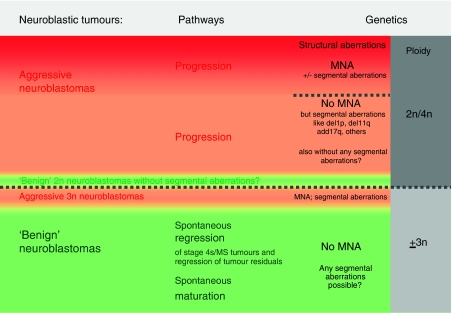Figure 1.
Biological pathways and genetic features in neuroblastic tumours. Tumour cell ploidy (grey columns) can be used to subdivide neuroblastoma tumours into two broad groups (separated by the long punctuated line). Although the ploidy subgroups roughly correspond to the biologic subgroups (aggressive neuroblastomas marked by a red background – either with MYCN amplification in dark red and separated by a short punctuated line from neuroblastomas without MYCN amplification vs less aggressive behaving neuroblastomas indicated by a green background), they do not totally match. Although aggressive near-triploid neuroblastomas (in red below the long punctuated line) have been observed, it is less clear if ‘benign’ diploid neuroblastomas without any structural aberrations (in green above the long punctuated line) occur. ‘Benign’ clinical behaviour refers either to spontaneous regression/maturation without any therapy or with surgery only (no cytotoxic therapy).

